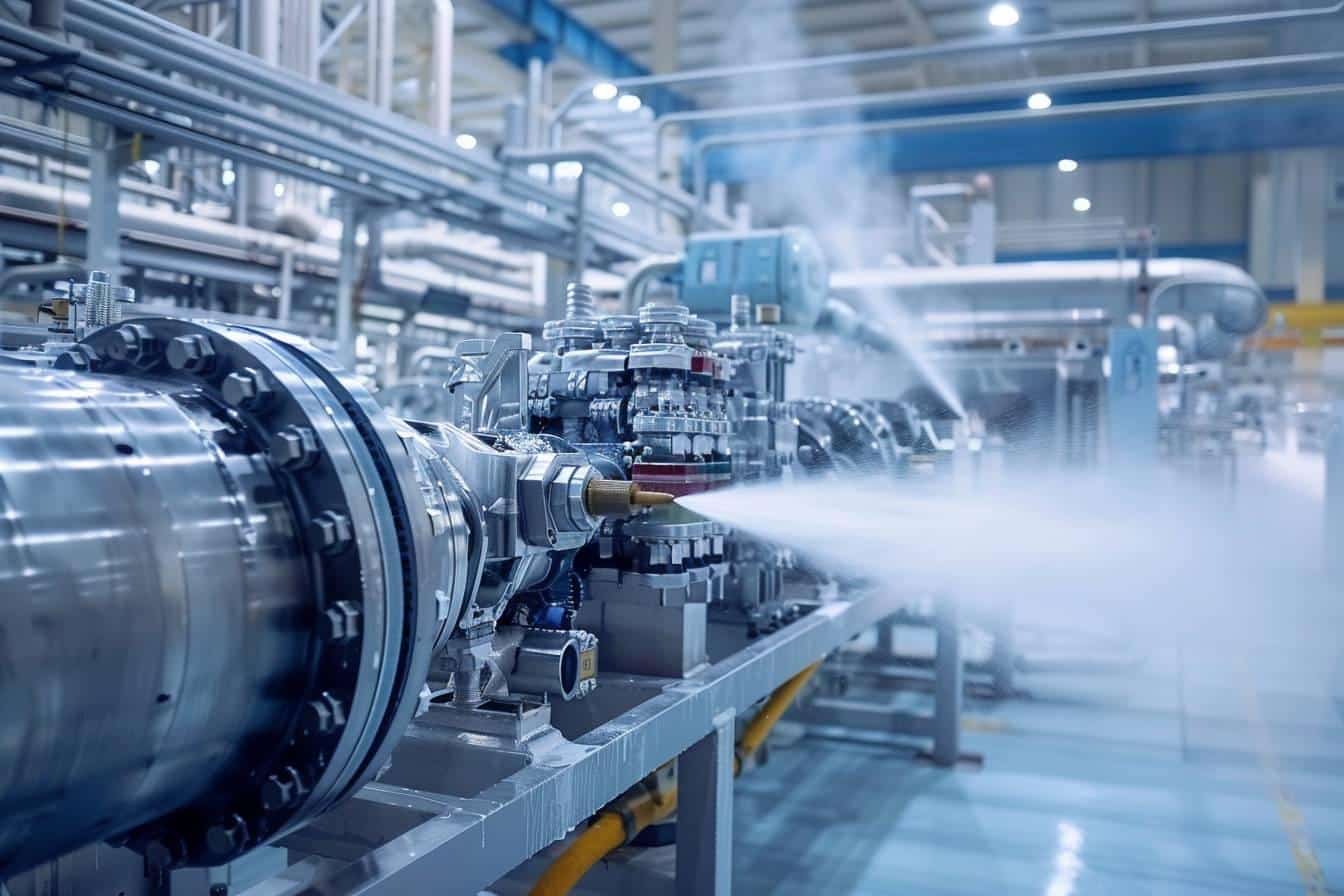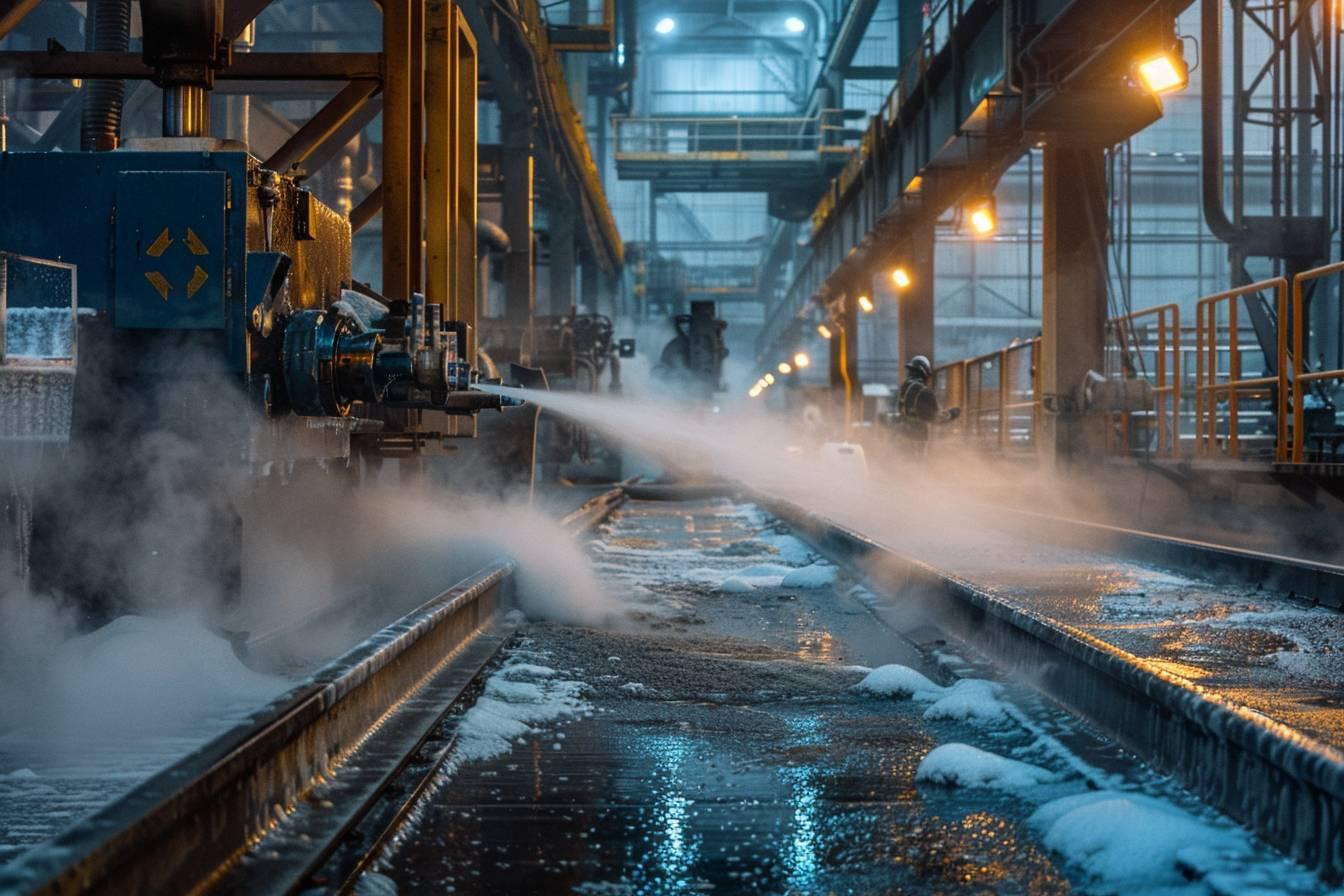Cryogenic cleaning has emerged as a revolutionary method for restoring industrial surfaces safely and efficiently. This innovative technique utilizes the power of extreme cold to remove contaminants, paint, and other unwanted materials from various surfaces. As industries seek more environmentally friendly and effective cleaning solutions, cryogenic cleaning has gained significant attention for its unique advantages.
Understanding the cryogenic cleaning process
The cryogenic cleaning process employs super-cooled particles, typically dry ice pellets, as the cleaning medium. These pellets are accelerated to high speeds and directed at the surface to be cleaned. Upon impact, several phenomena occur simultaneously :
- Thermal shock : The extreme temperature difference causes the contaminant to contract and crack.
- Kinetic energy : The impact of the pellets dislodges loosened contaminants.
- Sublimation : The dry ice pellets instantly transform from solid to gas, expanding rapidly and lifting away debris.
This unique combination of effects makes cryogenic cleaning highly effective for removing a wide range of contaminants, including :
- Oil and grease
- Paint and coatings
- Rust and corrosion
- Mold and biological growth
- Industrial residues
The process is particularly valuable in industries such as aerospace, automotive manufacturing, and food processing, where cleanliness and precision are paramount. Cryogenic surface restoration offers a non-abrasive alternative to traditional cleaning methods, preserving the integrity of delicate surfaces and intricate machinery.
Benefits of cryogenic cleaning in industrial applications
The adoption of cryogenic cleaning technology in industrial settings has been driven by its numerous advantages over conventional cleaning methods. These benefits include :
Environmental friendliness : Cryogenic cleaning uses dry ice pellets, which sublimate into harmless carbon dioxide gas, leaving no secondary waste. This characteristic significantly reduces the environmental impact compared to chemical solvents or abrasive blasting media.
Non-abrasive nature : Unlike sandblasting or other abrasive techniques, cryogenic cleaning does not damage the underlying surface. This quality is crucial for cleaning sensitive equipment, historical artifacts, or precision machinery.
Improved safety : The process eliminates the need for hazardous chemicals, reducing the risk of exposure to toxic substances for cleaning personnel. Additionally, the dry nature of the process minimizes slip hazards often associated with wet cleaning methods.
Time efficiency : Cryogenic cleaning can be performed quickly, often without the need for disassembly of equipment. This efficiency translates to reduced downtime and increased productivity in industrial settings.
| Aspect | Traditional Cleaning | Cryogenic Cleaning |
|---|---|---|
| Environmental Impact | High (chemical waste) | Low (no residue) |
| Surface Damage | Possible abrasion | Minimal to none |
| Safety Risks | Chemical exposure | Reduced risks |
| Cleaning Time | Often lengthy | Typically faster |

Innovative applications of cryogenic surface restoration
The versatility of cryogenic cleaning techniques has led to its adoption in various industries, each finding unique applications for this innovative technology. Some notable examples include :
Aerospace industry : NASA and other space agencies have embraced cryogenic cleaning for delicate spacecraft components. The method effectively removes contaminants without risking damage to sensitive electronics or precision-engineered surfaces.
Historical preservation : Conservators have found cryogenic cleaning invaluable for restoring historical artifacts and buildings. The gentle nature of the process allows for the removal of decades of grime without harming fragile materials or eroding historically significant details.
Manufacturing facilities : In the realm of industrial manufacturing, cryogenic cleaning has revolutionized maintenance procedures. It enables the cleaning of production equipment in situ, dramatically reducing downtime and increasing overall operational efficiency.
Food processing plants : The food industry has adopted cryogenic cleaning as a hygienic alternative to traditional methods. Its ability to remove stubborn residues without introducing moisture or chemicals aligns perfectly with strict food safety regulations.
As the technology continues to evolve, new applications are constantly being discovered. From cleaning printing presses to restoring fire-damaged structures, the potential of cryogenic cleaning seems boundless.
Future prospects and advancements in cryogenic cleaning
The field of cryogenic surface restoration is rapidly advancing, with ongoing research and development promising even more efficient and versatile cleaning solutions. Some of the exciting developments on the horizon include :
Automated systems : Integration of robotics and artificial intelligence is set to enhance the precision and efficiency of cryogenic cleaning processes. These advancements could lead to fully automated cleaning systems capable of operating in hazardous or hard-to-reach environments.
Enhanced pellet formulations : Scientists are exploring new materials and compositions for cryogenic pellets to improve cleaning effectiveness for specific applications. Custom-designed pellets could target particular contaminants more efficiently.
Miniaturization : The development of smaller, more portable cryogenic cleaning devices is expanding the technology’s reach. This trend could make the method accessible to smaller businesses and even household applications.
Integration with other technologies : Combining cryogenic cleaning with other restoration techniques, such as laser cleaning or ultrasonic methods, could create hybrid systems with enhanced capabilities.
As industries continue to prioritize sustainability and efficiency, the role of cryogenic cleaning in industrial surface restoration is likely to grow. Its unique combination of effectiveness, safety, and environmental friendliness positions it as a key technology in the future of industrial cleaning and maintenance.
The ongoing evolution of cryogenic cleaning technology promises to unlock new possibilities across various sectors. From preserving our historical heritage to enabling cutting-edge manufacturing processes, this innovative method is set to play an increasingly important role in shaping a cleaner, more efficient industrial landscape.

